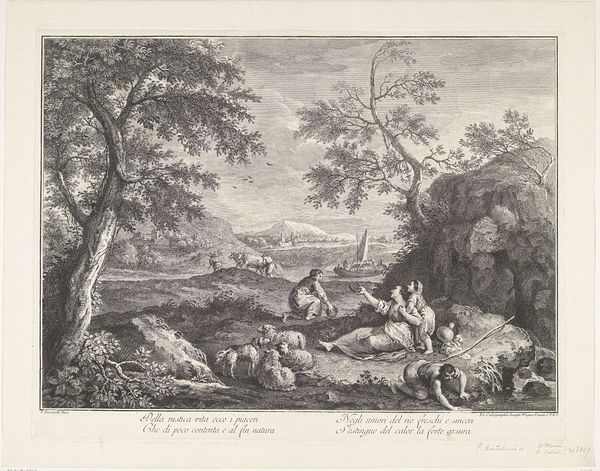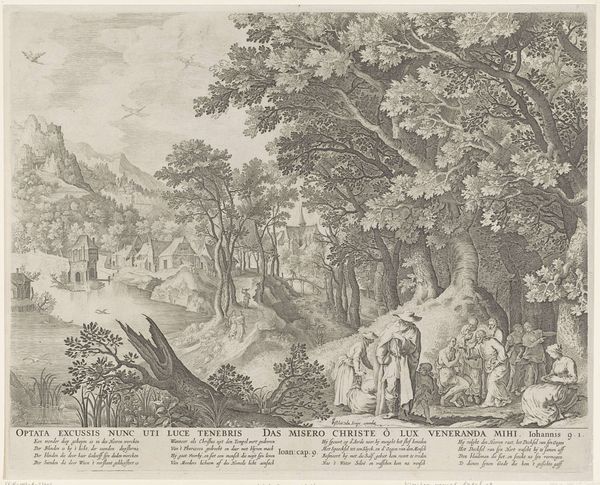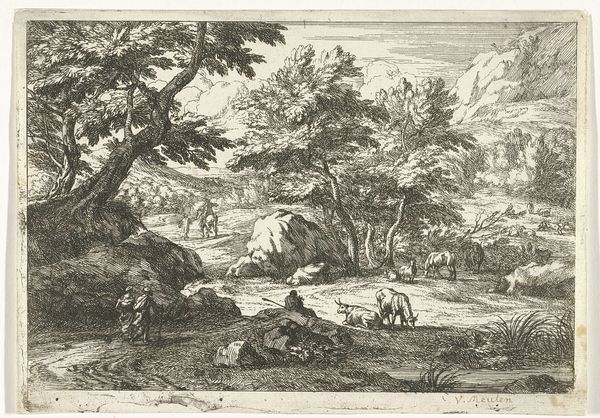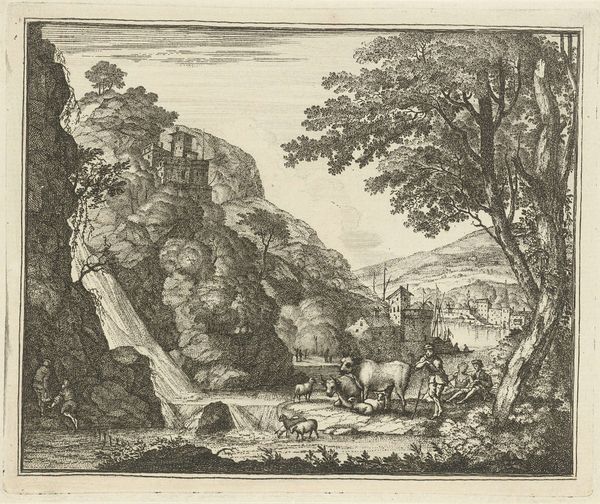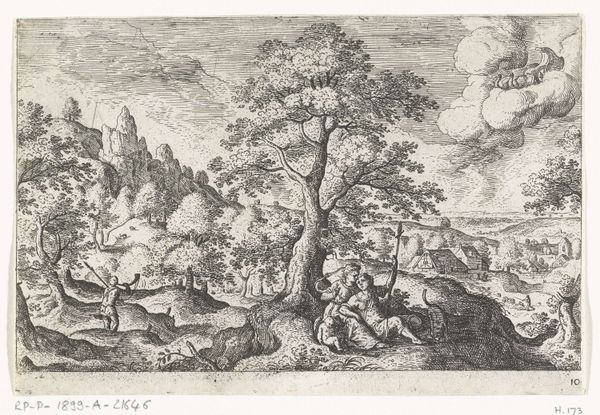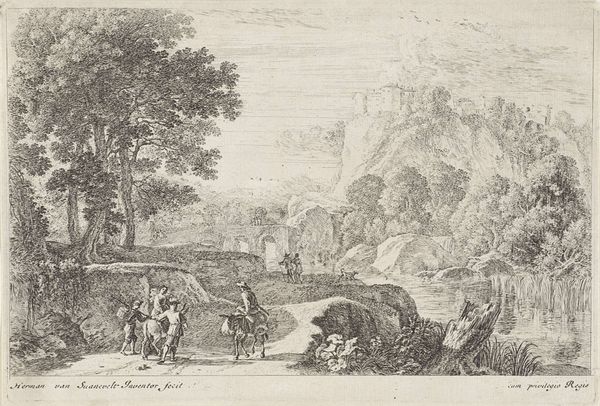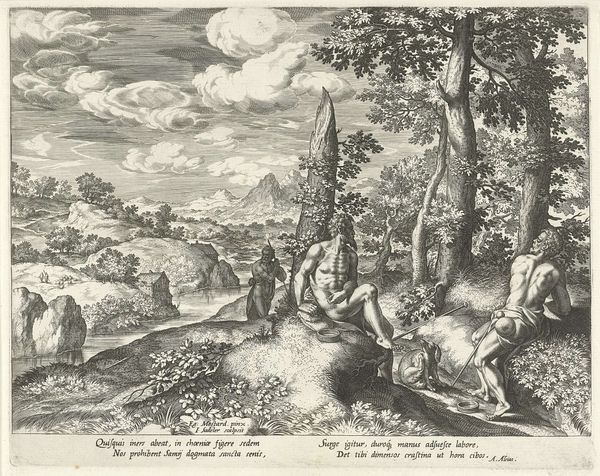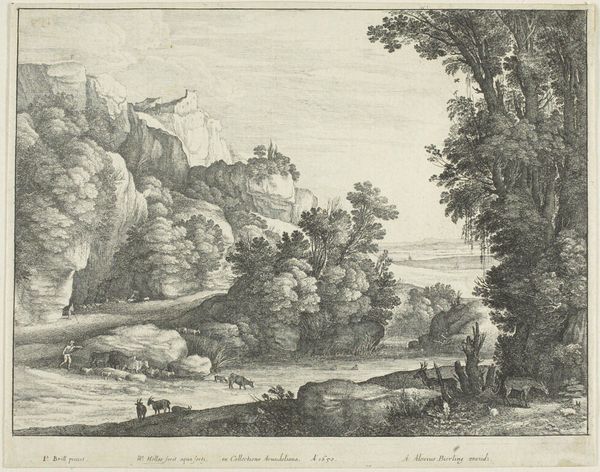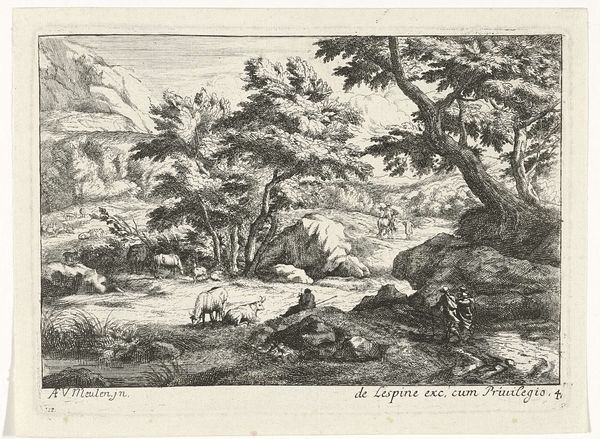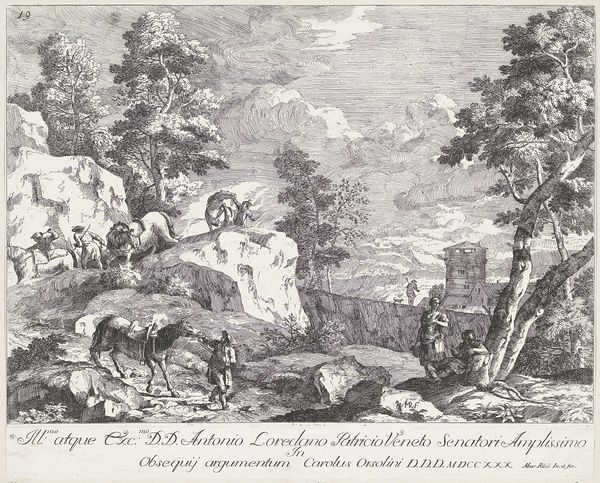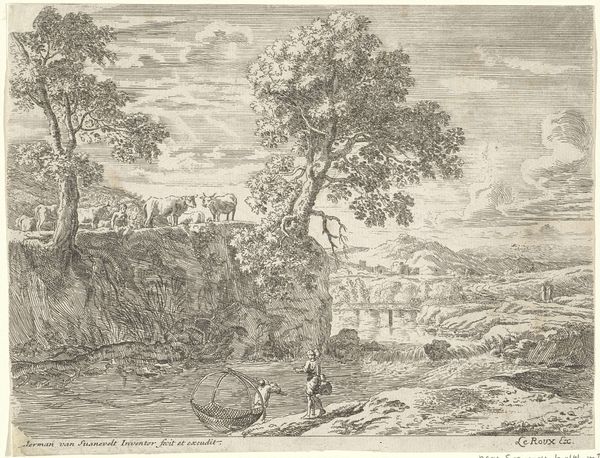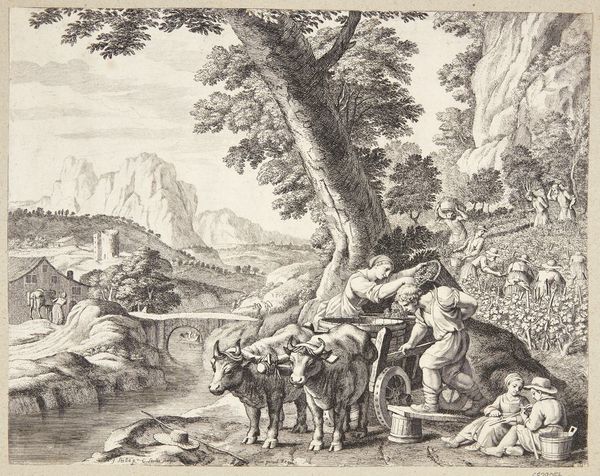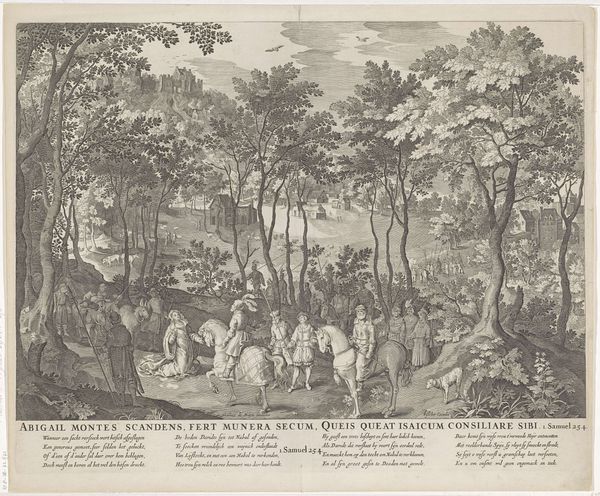
print, engraving
#
neoclacissism
# print
#
old engraving style
#
landscape
#
genre-painting
#
engraving
Dimensions: height 267 mm, width 315 mm
Copyright: Rijks Museum: Open Domain
Curator: Standing before us, we have "Aards Paradijs," or "Earthly Paradise," an engraving crafted in 1794 by Sophia Wilhelmina Evans. It’s quite striking. Editor: It is! A sense of profound calm just washes over you, doesn’t it? A total dreamscape… But also, something feels unsettling, slightly theatrical, almost as if all of the creatures are extras in a school play! Curator: That theatrical feeling you’re sensing might connect to the context of its creation, which situates itself firmly in an aesthetic tradition of the Neoclassicism movement, known for staging a perfect world based on harmony. Its display likely occurred within the intellectual circles of its time. I wonder, who saw it, and how would their personal beliefs have informed its interpretation? Editor: So interesting to consider! It really gets you thinking about peace, doesn't it? The artist positions predator and prey alongside each other...lions next to lambs... wolves and other such natural enemies... Is it intended as satire, I wonder, about this peace always hanging just out of reach for us mere mortals? Or is there some deeper element present, perhaps a hidden narrative? Curator: Evans created it towards the end of the 18th century when enlightenment ideals about the social order mixed with very real social inequalities across Europe, which might explain your reading. What’s fascinating is this ideal sits alongside printed text within the artwork itself; poetry promising the fulfillment of unity if conflict can be set aside. Is it possible she genuinely believed in humanity’s progress, or was she cleverly offering the promise of utopia while the establishment maintained the status quo? Editor: That tension makes it all the more resonant today! This sense of looking at a potential for peace, for equality... but from a vantage point aware of real inequalities and conflict feels like what we face now. The artist makes you question everything – isn't that a successful, powerful image? Curator: Precisely, it invites us to consider the ongoing role of the artist to promote an agenda, or perhaps a quiet rebellion in a world that seems to move further away from peace and equity, in its most hopeful light.
Comments
No comments
Be the first to comment and join the conversation on the ultimate creative platform.
